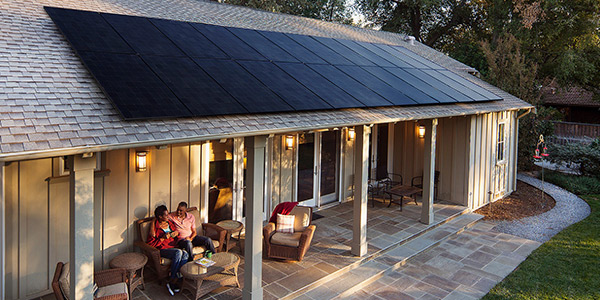Four trends have emerged from the evolution of net energy metering (NEM) rate design taking place across the U.S., an industry expert told state utility commissioners and their staff last week.
The successors to original utility tariffs for distributed energy resources (DER) are focusing on avoided utility costs, value provided to the grid, cost shifting between customers and energy demand, Matthew McDonnell, managing director at Strategen Consulting, told state regulators Thursday during the National Association of Regulatory Utility Commissioners’ Winter Policy Summit.
Reforming the way utilities compensate behind-the-meter generators for the power they add to the grid “is a process, not a singular event,” McDonnell said.
“As technology costs continue to decline and as DER further proliferate, states will need to embrace a comprehensive and holistic approach to DER that will need to be reflected in tariff designs,” he said.
Top among the trends in tariff overhauls is a focus on export compensation rates.
McDonnell said the widely used net billing approach that compensated energy by retail rate is moving to a calculation based on what utilities avoid spending by not building generation equal to what a customer’s DER provides.
In addition, how tariffs handle the calculation between what customer systems export and import is changing.
“With netting intervals, while they can vary from annual to instantaneous, we are seeing a trend towards greater granularity in order to better reflect the value provided to the grid on a time-differentiated basis,” McDonnell said.
NEM customer bills will also see more base charges in the future.
“With cost shifting a concern, many states have embraced non-bypassable charges as a way to ensure that public benefit programs and services remain adequately and equitably funded,” he said.
Some new NEM iterations, McDonnell added, are transitioning customers to billing based on when they consume electricity.
“We are beginning to see a trend whereby DER customers are increasingly asked to take service under an underlying [time-of-use] consumption tariff, with a goal of incenting more supportive grid behavior through better delivery of price signals to customers,” McDonnell said.
Integrative DER
According to McDonnell, DER tariff design will need to evolve to integrate DER as an operational resource that can provide core grid services. To achieve that goal, he said, regulators should ensure that non-wires solutions are accounted for and DER are integrated into power system planning for customers to fully realize cost savings.
Further consideration, McDonnell added, must be given to the possibility for DER participation in wholesale markets, as envisioned in FERC Order 2222.
“These activities will need to be harmonized at the distribution system level, and DER tariffs may need to enhance flexibility and ensure that there is no double counting of grid service provision,” he said.
In addition, state utility regulators have a complicated set of factors to work with in designing power portfolios that will meet clean energy targets.
Cost-effective resource portfolios must preserve customer choice and integrate DER as a core operational resource, while also acknowledging greenhouse gas reductions from customer-sited generation, McDonnell said.
The changes to states’ DER programs will also be underscored by a call to make them equitable and inclusive.
“DER policies … need to open opportunities for [low- to moderate-income] customers to participate,” he said.
State Hot Spots
How state regulators are approaching the evolving NEM landscape varies widely, but a few state examples demonstrate the leading edge of DER rate design, according to McDonnell.
While some states are just starting to address changes to their original NEM tariffs, California is headed into its third iteration.
California in 2017 implemented NEM 2.0 to succeed its original NEM program. Under NEM 2.0, there is no program cap and existing customers were grandfathered for 20 years. While the customers’ export compensation is still at the retail rate, NEM customers have to take service under a time-of-use rate, McDonnell said.
Proceedings for NEM 3.0 have begun, with new program design proposals due in mid-March.
McDonnell said that some of the principles guiding the new NEM tariff design include “the need to ensure equal compensation for the same generation, equal collection of unavoidable and non-bypassable charges from both participants and non-participants and the requirement that participants pay a fair share for the grid services they use.”
Regulators updated New York state’s NEM tariff in 2017 with a value of distributed energy resources (VDER) approach that McDonnell said offers more efficient price signals for mass market customers.
“Export compensation is determined by the DER value stack, stacking the wholesale price of electricity with other grid benefits of DER, including avoided emissions, cost savings to other customers and avoided capital investments,” he said.
Currently, VDER applies to non-residential DER customers, with the original NEM tariff extended for residential customers until 2022.
Michigan utility regulators in 2018 adopted a distributed generation program to replace its original net metering program. Of note in the new program, McDonnell said, is an “inflow-outflow” tariff mechanism.
Under the new tariff, DER customers pay for electricity delivered by the utility (inflow) under a regular cost of service-based retail rate, and the electricity they generate behind the meter but do not use (outflow) receives a credit. In the order adopting the new tariff design, Public Service Commission staff said inflow-outflow “accommodates a wide array of potential future rate designs, such as those including demand charges, dynamic pricing and dynamic credits.” It can also “form the basis for future load-control and demand-response programs that target distributed generation customers.”




